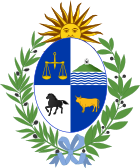The history of Uruguay comprises different periods: the pre-Columbian time or early history, the Colonial Period (1516–1811), the Period of Nation-Building (1811–1830), and the history of Uruguay as an independent country (1830–present).

The politics of Uruguay abide by a presidential representative democratic republic, under which the president of Uruguay is both the head of state and the head of government, as well as a multiform party system. The president exercises executive power and legislative power and is vested in the two chambers of the General Assembly of Uruguay. The Judiciary is independent from the executive and legislature.
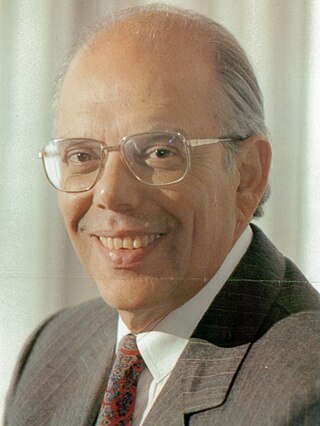
Jorge Luis Batlle Ibáñez was a Uruguayan politician and lawyer, who served as the 38th president of Uruguay from 2000 to 2005. A member of the Colorado Party, he previously served as National Representative from 1959 to 1967, and as Senator of the Republic from 1985 to 1990 and from 1990 to 1999.

José Pablo Torcuato Batlle y Ordóñez, nicknamed Don Pepe, was a prominent Uruguayan politician, who served two terms as President of Uruguay for the Colorado Party. He was the son of a former president and was widely praised for his introduction of his political system, Batllism, to South America and for his role in modernizing Uruguay through his creation of extensive welfare state reforms.

The National Party also known as the White Party, is a major political party in Uruguay. Founded in 1836 by General Manuel Oribe, it is the country's oldest active political party, and along with the Colorado Party, its origin dates back to the establishment of Uruguay as an independent state.
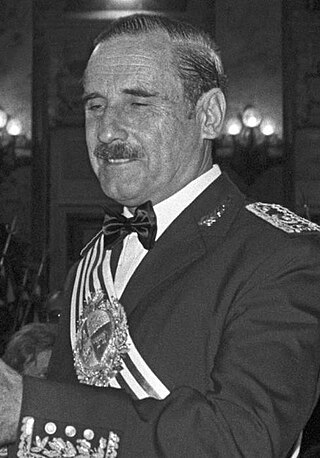
Gregorio Conrado Álvarez Armelino, also known as El Goyo, was an Uruguayan Army general who served as president of Uruguay from 1981 until 1985 and was the last surviving president of the civic-military dictatorship.

Alberto Abdala was an Uruguayan attorney, politician, painter and Vice-President from 1967 to 1972.

José Luis Gabriel Terra Leivas, better known as Gabriel Terra, was a lawyer, professor, economist, writer, statesman and politician. Between 1900 and 1939 he served as a prominent advisor to all Uruguayan governments on diplomatic, economic and financial issues, between 1907 and 1922 he held important ministries, he was a member of the National Council of Administration between 1926 and 1929. He governed as Constitutional President from March 1 from 1931 until his self-coup on March 31, 1933, beginning the historical period called "Terra dictatorship" or "Third Republic", he governed temporarily until March 1, 1934, dissolved the Collegiate and recovered the single executive system through the Constitution of 1934 ruling until June 11, 1938.

Feliciano Alberto Viera Borges was a Uruguayan political figure.

According to the Organic Law of Regional Governments, the regions are, with the departments, the first-level administrative subdivisions of Peru. Since its 1821 independence, Peru had been divided into departments but faced the problem of increasing centralization of political and economic power in its capital, Lima.
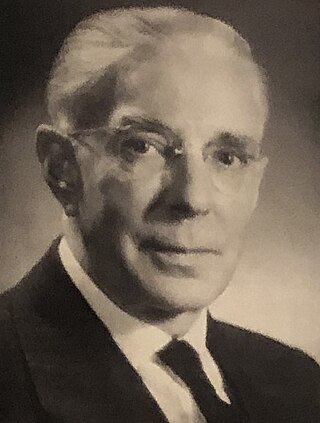
Andrés Martínez Trueba was the President of Uruguay from 1951 to 1955.

The Constitution of Uruguay is the supreme law of Uruguay. Its first version was written in 1830 and its last amendment was made in 2004.

The president of Uruguay, officially known as the president of the Oriental Republic of Uruguay, is the head of state and head of government of Uruguay. Their rights are determined in the Constitution of Uruguay. Along with the Secretariat of the Presidency, the Council of Ministers and the director of the Office of Planning and Budget, the President is part of the executive branch. In case of absence, their office is exercised by the vice president. In turn, the president of the republic is the commander in chief of the Armed Forces.

A constitutional referendum was held in Uruguay on 25 November 1917. Amongst the changes to the system of government, the new constitution would create a National Council of Administration alongside the presidency. The National Council of Administration would have nine members; six from the winning party and three from the runner-up party. The proposals were approved by 95% of voters. The result was confirmed by the Senate on 18 December, and the new constitution came into force on 1 March 1919.

The sixth Constitution of Uruguay came into force in 1967.

The fifth Constitution of Uruguay was in force between 1952 and 1967.

The third Constitution of Uruguay was in force between 1934 and 1942.

The second Constitution of Uruguay was in force during the period 1918–1933.

The National Council of Administration was part of the executive power in Uruguay between 1919 and 1933, ruling alongside the President of the Republic.
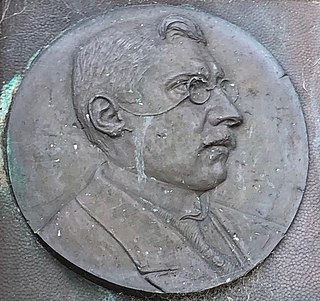
Sosism was a short-lived corporatist political movement in Uruguay, led by Julio María Sosa.
